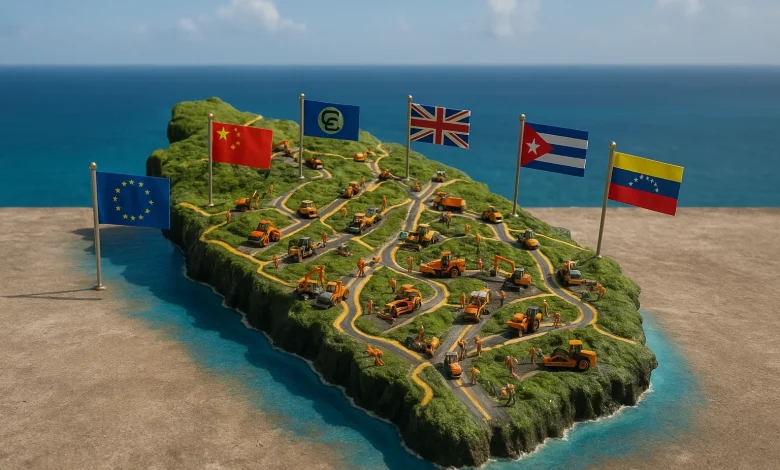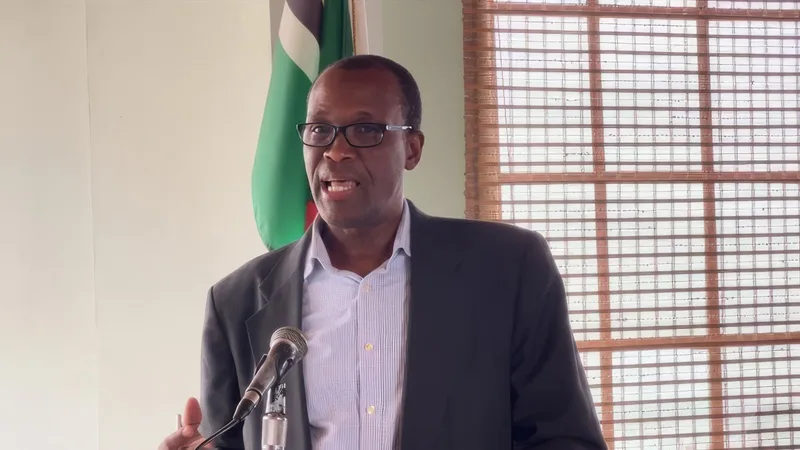Road Rehabilitation in Dominica

Road rehabilitation in Dominica refers to the continuous upgrading, repair, and climate-resilient rebuilding of national highways, feeder roads, and urban corridors that connect communities, farms, schools, health facilities, ports, and the airport. Given steep terrain, intense rainfall, and hurricane exposure, works typically combine pavement reconstruction with slope stabilisation, river training, improved drainage, bridges, culverts, sea defences near coastal roads, and safer curves and widths. The programme links mobility with livelihoods by restoring access to markets and tourism sites and by reducing disaster downtime for households and businesses.
Policy, institutions, and financing
Dominica’s current road programme is led by the Ministry of Public Works, Public Utilities and Digital Economy, with execution support from the Climate Resilience Execution Agency for Dominica. Financing blends national budgets with development partners. The Caribbean Development Bank and the UK’s Caribbean Infrastructure Partnership Fund co-finance the Loubière to Grand Bay corridor, while the World Bank’s Disaster Vulnerability Reduction Project funds major East Coast Road works and nature-based slope stabilization. Chinese cooperation financed the modernisation of the West Coast Road, and later a post-Erika rehabilitation package. Targeted contracts also address edge failures and localised hazards.
Socioeconomic impact and resilience
Rehabilitated roads shorten travel times, improve access to emergency care, sustain farm-to-market transport, and protect critical lifelines to Douglas-Charles Airport and port facilities. Designs now prioritise drainage, landslip control, and coastal protection so that corridors reopen quickly after storms. Recent contracts specifically target edge failures on primary highways, complementing larger multi-year schemes.
Major road rehabilitation projects since the mid-1970s
- Loubiere to Grand Bay Road Reconstruction Project: Rehabilitates 11 km between Loubiere Bridge and Grand Bay Junction with bridges, drainage, slope stabilisation, and asset management, financed by CDB and UKCIF, plus signage.
- Disaster Vulnerability Reduction Project, East Coast Road Works: Multi lot upgrades from Pond Casse toward Hatton Garden including bridges, culverts, realignments, and slope stabilisation, financed by the World Bank, drainage improvements and upgrades.
- DVRP East Coast Road Lot 1, Bois Diable to Castle Bruce: Reconstructed priority section with widening, retaining walls, culverts, pavement, signage, and bus bays to restore reliable eastern access after repeated landslides and heavy rainfall disruptions.
- DVRP East Coast Road Lot 2, Castle Bruce to Hatton Garden: Extends upgrades through Kalinago Territory, replacing Castle Bruce, Richmond, and Pagua bridges, improving drainage, alignment, and safety standards with guardrails, bus bays, and access enhancements.
- Road Improvement and Maintenance Project, Roseau Valley: Upgraded 12.4 kilometres Bath Estate to Trafalgar, Laudat to Trafalgar, and St Aroment Spur, funded by CDB with government counterpart, drainage, resurfacing, and tourism improvements.
- Edward Oliver LeBlanc Highway, West Coast Road Rehabilitation: Chinese funded modernisation delivering resurfacing, embankment protection, safer curves, smoother travel between Roseau and Portsmouth, plus coastal strengthening, bridge upgrades, drainage improvements, and sea defenses.
- West Coast Road Post-Erika Rehabilitation: Additional Chinese grant repaired damaged sections, replacing bridges and drainage at Macoucherie, Batalie, and Pointe Ronde and strengthening embankments after Tropical Storm Erika in 2015.
- Layou Flood Event Rehabilitation and Reconstruction, CDB: Integrated project constructing emergency shelter, river defences, and road realignment from Hillsborough Bridge eastwards, mitigating flood risk and protecting the E O LeBlanc corridor, critical.
- Nicholas Liverpool Highway, Pont Casse to Melville Hall: Completed interior airport corridor rehabilitation, improving shoulders, curves, and drainage along thirty six kilometres with financing support, enabling travel, improved reliability, and fewer landslip closures.
- Edge Failure Repairs, Nicholas Liverpool and E.O. LeBlanc Highways (2024–2025): Contracted stabilisation restoring carriageway width, protecting airport and west coast lifelines after erosion and failures with embankment reinforcement, drainage clearing, and shoulder reinstatement at sites.
- Soufrière and Scotts Head Sea Defences and Road Improvement: Combined coastal defence and roadway works protecting southwest terminus communities and maintaining access through the marine reserve tourism zone with revetments, drainage, and carriageway repairs.
- East Coast Road Designs and Mobilisation, DVRP (2018): Procured design services for Pond Casse to Bois Diable, Castle Bruce to Hatton Garden, and Castle Bruce to Petite Soufriere sections, enabling phasing and consultations.
- GCCA Slope and Road Stabilisation, Antrim Valley and Belles: Pilot interventions addressing landslip risk, drainage, and embankments to safeguard commuters and protect access toward the airport corridor, testing designs and maintenance methods for scaling.
- Emergency Recovery Project, Coastal and Road Protection Components: Documented subprojects at Soufriere Scotts Head and Hatton Garden delivering coastal protection and reinstatement priorities following extreme events with World Bank financing and technical support.
- Natural Disasters Remedial and Mitigation Measures, 10th EDF: Improves Bois Diable to White River corridor with slope stabilisation, culvert and bridge replacements, pavement rebuilding, alignment widening, signage, and safety barriers, drains construction, extensive.
- Road Maintenance and Rehabilitation Project, World Bank 1986: Coordinated national programme repairing key sections, restoring drainage, patching pavements, and upgrading 36 kilometres, addressing deterioration after 1979 to 1980 hurricanes and years of underinvestment.
- Eleventh EDF Feeder and Farm Access Roads Rehabilitation: EU financed contracts improved priority agricultural access routes with culverts, retaining walls, drains, lay-bys, signage, and slope stabilisation to strengthen value chains and rural resilience.
- Basic Needs Trust Fund Programme 10, Community Roads: CDB grant supported upgrades across parishes, improving village access, drainage, and safety features, complementing local works and strengthening connectivity to rural schools, clinics, and markets.
- Banana Accompanying Measures, Feeder Roads Rehabilitation: EU support rehabilitated approximately seventy two kilometres of feeder roads with drainage and surface repairs, enhancing farm logistics and product competitiveness following market preference reforms.
- Layou Road Realignment, Hillsborough Bridge to Yorke Valley: Realigned four kilometres northward from river, rebuilt pavement, and implemented river training to lessen overtopping and protect the west–east link through the Layou Valley.
- Melville Hall to Pond Casse Highway Rehabilitation and Naming: Delivered airport access improvements and designation as Dr Nicholas Liverpool Highway, following upgrades supported by external partners and government, improving safety, drainage, and travel times.
- Roseau Bayfront Sea Wall and Adjacent Road Works: Coastal defence and roadway improvements safeguarding urban transport, port frontage, and pedestrian movement along the capital waterfront with donor backed financing, specialist technical inputs, support.
- Pond Casse to Melville Hall Road Project Lots: Restored strategic interior highway sections under multi year programme, improving alignment, shoulders, and drainage to secure reliable airport connectivity during severe rainfall and landslides events.
- East Coast Road Programme, Community Consultations and Mobilisation: Structured stakeholder engagement supported environmental safeguards and land acquisition planning, enabling timely construction sequencing and mitigation measures across sensitive valleys and coastal sections throughout implementation.
Long-Term Outlook for Road Rehabilitation in Dominica
The future of road rehabilitation in Dominica rests on consistent investment, strategic partnerships, and sustainable planning. Over the past five decades, countless road projects have reshaped access between villages, towns, and the capital, improving trade, tourism, and everyday life for Dominicans. Yet, the country’s steep terrain and vulnerability to hurricanes, floods, and landslides mean maintenance is a never-ending responsibility. Looking forward, the government’s approach is likely to combine modern engineering standards, climate-resilient designs, and regional financing through institutions such as the Caribbean Development Bank and World Bank. With these frameworks, Dominica’s road network can remain both reliable and resilient.




